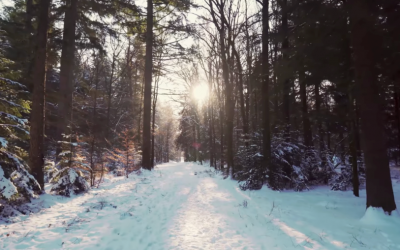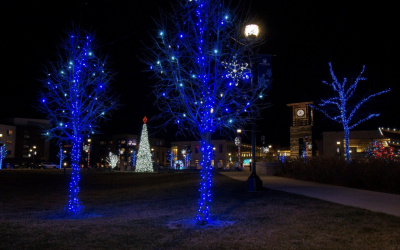We’re returning to the time of stagecoach travel in a community where Yankee refinement met the Wisconsin wilderness. Here’s David Simmons, Site Director for Wade House in Greenbush, Wis.:
Tell us about Wade House. Why is this historic site special?
One of 12 Wisconsin Historical Society historic sites and museums, Wade House is celebrating its 60th year of operation during 2013. In 1953, the site – which then consisted of the stagecoach hotel or inn, an 1855 Greek Revival house, and a reconstructed blacksmith shop – was gifted to the Wisconsin Historical Society by the Kohler Foundation, which had funded the restoration work. Over the years, the site has grown to include a reconstructed up-and-down saw, powered by the Mullet River and operated for more than 50 years by the Herrling family; the Wesley W. Jung Carriage Museum, which has just re-opened in a new, state-of-the-art, 20,000 square foot exhibition space; and a new Visitor Center, with orientation exhibits, museum store, café, and meeting spaces. The site is situated on 240 rolling acres near the northern reaches of the Kettle Moraine State Forest.
One of the things that make Wade House special is the promise of a horse-drawn vehicle ride for every visitor. A new, reproduction omnibus and covered wagon transport our guests from the visitor center to the historic core of the site, reinforcing the site’s major theme of the horsepowered economy of the 19th century.
How about a history lesson. How was the Wade House utilized in the 19th century?
The 27-room Wade House stagecoach hotel was completed in the summer of 1850. It was the built by Sylvanus and Betsey Wade to serve the growing numbers of travelers along the road from Sheboyan to Fond du Lac. Many guests simply took meals in the hotel, and some spent the night. The public rooms on the first floor were places to catch up on the news, buy a stage ticket, post a letter, have a drink, or even purchase some simple provisions. The hotel was also the site of public meetings and social gatherings, such as dances. During the heyday of stagecoach travel – the decade of the 1850s – the Wade House was a hubbub of activity.
What is it about exploring the Inn that allows us to better understand its history?
While the inn or hotel is a sprawling building with many rooms, visitors will discover that functions and activities were compartmentalized: some spaces were reserved for men and some for women; the family had private quarters upstairs; rooms for overnight guests were smaller and more simply appointed than those for guests who rented rooms for a longer stay; and that food preparation took place in not one but two kitchens.
Bring us to present day. What kind of experience can visitors enjoy today?
Visitors to Wade House can step inside a reproduction stagecoach, hear about life in Greenbush in the 1850s, and learn about plank road (and other) travel in the new orientation exhibit spaces in the Visitor Center; they will experience the horse-drawn world of the 19th century in the new Wesley W. Jung Carriage Museum, through displays of 70 vehicles and interactive exhibits; they will ride on a horse-drawn vehicle, traveling back in time across the Mullet River and through the woods to the historic core of the site, where authentically-costumed interpreters, muscle power and water power bring to life the work of the blacksmith and sawyer; they will tour the Wade House hotel and its kitchen garden, and they’ll see (and hear) heritage breed chickens and sheep; they can take a beautiful trail through the woods and across a boardwalk; and they can have a delicious lunch at the site’s Butternut Café.
Describe Wade House in three words or less: Rich, multi-dimensioned experience
What do you love most about the site?
The substantial documentary and photographic archive that help us to better understand and share the stories of the Wade, Herrling, and Jung families. These have been plumbed again most recently in the development of exhibits within the new Visitor Center and Museum facility.
What’s the strangest thing visitors will see?
That’s an interesting question. For some, it may be the well that’s located inside the Wade House summer kitchen (a welcome, strategic placement during the dead of winter!); or the chamber pots under the beds in the Wade House; or the large, horse-drawn road sprinkler in the Carriage Museum – one of many specialized vehicles in the collection. Experiences are rich and diverse at Wade House, and there are surprises around every corner.
Do you have any tips for first-time visitors?
Don’t short-change your visit: try to plan on at spending at least 2.5 to 3 hours or more at the site. There’s a tremendous amount to see and do. And if you’re here over the lunch hour, plan to eat in the Butternut Café (open daily, 11 am – 2 pm). Wade House hosts a number of special events across the seasons, so if an event’s theme is of particular interest – whether vintage base ball, foodways, or the Civil War, as examples – then you may want to coordinate your visit to mesh with one of these special offerings.
 David Simmons has been the Director at Wade House historic site since 2006. Trained in American historical archaeology and the interdisciplinary study of the past, David formerly served for 24 years on the staff of Old Sturbridge Village in Massachusetts – the largest living history museum in New England. He is a board member of the Association of Midwest Museums and former board member of the Visitor Studies Association.
David Simmons has been the Director at Wade House historic site since 2006. Trained in American historical archaeology and the interdisciplinary study of the past, David formerly served for 24 years on the staff of Old Sturbridge Village in Massachusetts – the largest living history museum in New England. He is a board member of the Association of Midwest Museums and former board member of the Visitor Studies Association.




